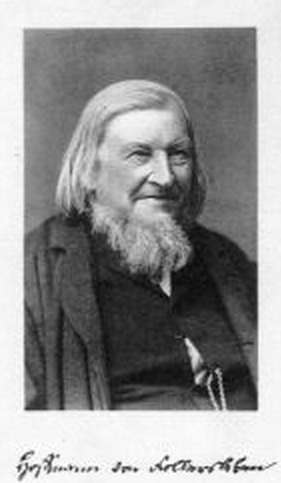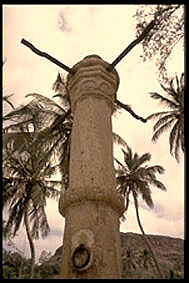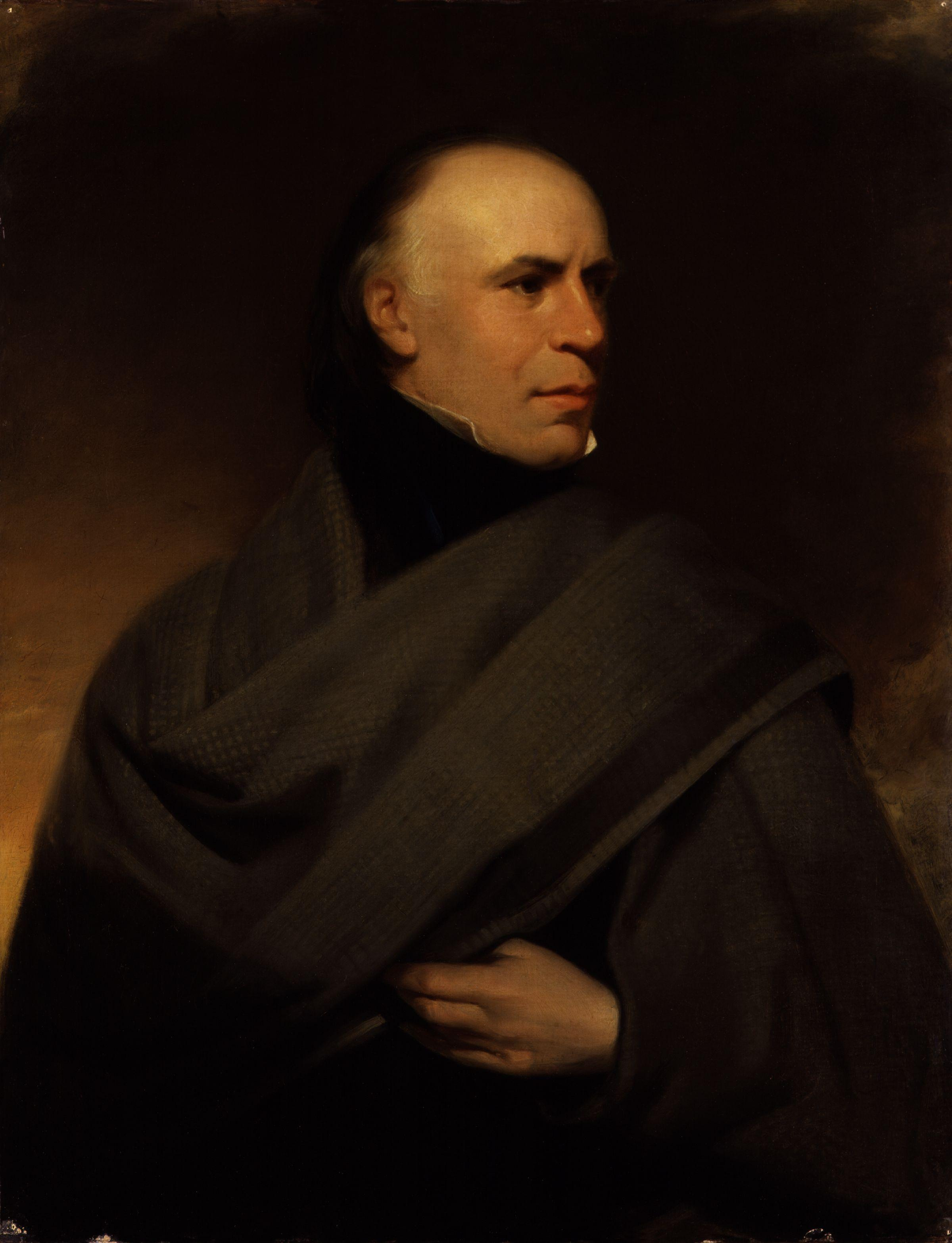|
James Hyslop (poet)
James Hyslop (23 July 1798 – 1827) was a Scottish poet. Life Born in the parish of Kirkconnel, Dumfriesshire, an illegitimate son of Margaret Lambie (1778–1845) and William Hyslop (born 1775), Hyslop was early put out to farm-work, but taught himself languages and mathematics. From 1812 to 1816 he was engaged as a shepherd on Nether Wellwood farm, in the parish of Muirkirk. Between 1816 and 1818 he was employed at Corsebank; from there he wrote a poetical epistle to his early Kirkconnel teacher, signed "James Hislop", but later always used the spelling "Hyslop". In 1818 Hyslop went to Greenock, where he opened a day-school, and wrote for the '' Edinburgh Magazine''. At first he was fairly successful, but his prospects were blasted by having to pay a large sum for which he had become security. Leaving Greenock in 1821, he obtained a post as tutor on board HMS ''Doris'', bound for South America The voyage lasted for three years, and an account of part of the voyage, with impres ... [...More Info...] [...Related Items...] OR: [Wikipedia] [Google] [Baidu] |
Kirkconnel
Kirkconnel ( Gaelic: ''Cille Chonaill'') is a small parish in Dumfries and Galloway, southwestern Scotland. It is located on the A76 near the head of Nithsdale. Principally it has been a sporting community. The name comes from The Church of Saint Conal. In 1850 the village had only a single street. Next to Kirkconnel is a separate village called Kelloholm. It is also associated with the ballad '' Helen of Kirkconnel''. History The early church and settlement were situated at the foot of Kirkland Hill on the drove road from Ayrshire to Lanarkshire, which followed the steep incline beside the Glenaylmer Burn. Whether Saint Conal was an Irish monk or the son of a local shepherd befriended and educated by Glasgow's Saint Mungo, Christianity came early to this part of Nithsdale. A Celtic cross, erected in 1880 by the Duke of Buccleuch at the instigation of the minister, the Rev. John Donaldson, marks the reputed burial place of Saint Conal. From the neighborhood of the cross, o ... [...More Info...] [...Related Items...] OR: [Wikipedia] [Google] [Baidu] |
Charity School
Charity schools, sometimes called blue coat schools, or simply the Blue School, were significant in the history of education in England. They were built and maintained in various parishes by the voluntary contributions of the inhabitants to teach poor children to read and write, and for other necessary parts of education. They were usually maintained by religious organisations, which provided clothing and education to students freely or at little charge. In most charity schools, children were put out to trades, services, etc., by the same charitable foundation. Some schools were more ambitious than this and sent a few pupils on to university. Charity schools began in London, and spread throughout most of the urban areas in England and Wales. By 1710, the statistics for charity schools in and around London were as follows: number of schools, 88; boys taught, 2,181; girls, 1,221; boys put out to apprentices, 967; girls, 407. By the 19th century, English elementary schools were ... [...More Info...] [...Related Items...] OR: [Wikipedia] [Google] [Baidu] |
1827 Deaths
Eighteen or 18 may refer to: * 18 (number), the natural number following 17 and preceding 19 * one of the years 18 BC, AD 18, 1918, 2018 Film, television and entertainment * ''18'' (film), a 1993 Taiwanese experimental film based on the short story ''God's Dice'' * ''Eighteen'' (film), a 2005 Canadian dramatic feature film * 18 (British Board of Film Classification), a film rating in the United Kingdom, also used in Ireland by the Irish Film Classification Office * 18 (''Dragon Ball''), a character in the ''Dragon Ball'' franchise * "Eighteen", a 2006 episode of the animated television series '' 12 oz. Mouse'' Music Albums * ''18'' (Moby album), 2002 * ''18'' (Nana Kitade album), 2005 * '' 18...'', 2009 debut album by G.E.M. Songs * "18" (5 Seconds of Summer song), from their 2014 eponymous debut album * "18" (One Direction song), from their 2014 studio album ''Four'' * "18", by Anarbor from their 2013 studio album ''Burnout'' * "I'm Eighteen", by Alice Cooper common ... [...More Info...] [...Related Items...] OR: [Wikipedia] [Google] [Baidu] |
1798 Births
Events January–June * January – Eli Whitney contracts with the U.S. federal government for 10,000 muskets, which he produces with interchangeable parts. * January 4 – Constantine Hangerli enters Bucharest, as Prince of Wallachia. * January 22 – A coup d'état is staged in the Netherlands ( Batavian Republic). Unitarian Democrat Pieter Vreede ends the power of the parliament (with a conservative-moderate majority). * February 10 – The Pope is taken captive, and the Papacy is removed from power, by French General Louis-Alexandre Berthier. * February 15 – U.S. Representative Roger Griswold (Fed-CT) beats Congressman Matthew Lyon (Dem-Rep-VT) with a cane after the House declines to censure Lyon earlier spitting in Griswold's face; the House declines to discipline either man.''Harper's Encyclopaedia of United States History from 458 A. D. to 1909'', ed. by Benson John Lossing and, Woodrow Wilson (Harper & Brothers, 1910) p171 * March ... [...More Info...] [...Related Items...] OR: [Wikipedia] [Google] [Baidu] |
Covenanters
Covenanters ( gd, Cùmhnantaich) were members of a 17th-century Scottish religious and political movement, who supported a Presbyterian Church of Scotland, and the primacy of its leaders in religious affairs. The name is derived from '' Covenant'', a biblical term for a bond or agreement with God. The origins of the movement lay in disputes with James VI, and his son Charles I over church structure and doctrine. In 1638, thousands of Scots signed the National Covenant, pledging to resist changes imposed by Charles on the kirk; following victory in the 1639 and 1640 Bishops' Wars, the Covenanters took control of Scotland and the 1643 Solemn League and Covenant brought them into the First English Civil War on the side of Parliament. Following his defeat in May 1646 Charles I surrendered to the Scots Covenanters, rather than Parliament. By doing so, he hoped to exploit divisions between Presbyterians, and English Independents. As a result, the Scots supported Charles in the ... [...More Info...] [...Related Items...] OR: [Wikipedia] [Google] [Baidu] |
Richard Cameron (Covenanter)
Richard Cameron (1648? – 22 July 1680) was a leader of the militant Presbyterians, known as Covenanters, who resisted attempts by the Stuart monarchs to control the affairs of the Church of Scotland, acting through bishops. While attempting to revive the flagging fortunes of the Covenanting cause in 1680, he was tracked down by the authorities and killed in a clash of arms at Airds Moss in Ayrshire. His followers took his name as the Cameronians and ultimately formed the nucleus of the later Scottish regiment of the same name, the Cameronians. The regiment was disbanded in 1968. Life Cameron was born at Falkland, Fife in 1647, or 1648, the son of Allan and Margaret Cameron who farmed the estate of Fordell, near Leuchars. St Salvator's College of St Andrews University has a record of his enrolment in the Arts faculty there on 5 March 1662. After graduation he returned to Falkland where he found employment as the parish school teacher and precentor in late 1669 or early 1670 ... [...More Info...] [...Related Items...] OR: [Wikipedia] [Google] [Baidu] |
Santiago, Cape Verde
Santiago ( Portuguese for “Saint James”) is the largest island of Cape Verde, its most important agricultural centre and home to half the nation's population. Part of the Sotavento Islands, it lies between the islands of Maio ( to the east) and Fogo ( to the west). It was the first of the islands to be settled: the town of Ribeira Grande (now Cidade Velha and a UNESCO World Heritage Site) was founded in 1462. Santiago is home to the nation's capital city of Praia. History The eastern side of the nearby island of Fogo collapsed into the ocean 73,000 years ago, creating a tsunami 170 meters high which struck Santiago. In 1460, António de Noli became the first to visit the island. Da Noli settled at ''Ribeira Grande'' (now Cidade Velha) with his family members and Portuguese from Algarve and Alentejo in 1462.Valor simb ... [...More Info...] [...Related Items...] OR: [Wikipedia] [Google] [Baidu] |
Cape Of Good Hope
The Cape of Good Hope ( af, Kaap die Goeie Hoop ) ;''Kaap'' in isolation: pt, Cabo da Boa Esperança is a rocky headland on the Atlantic coast of the Cape Peninsula in South Africa. A common misconception is that the Cape of Good Hope is the southern tip of Africa, based on the misbelief that the Cape was the dividing point between the Atlantic and Indian oceans, and have nothing to do with north or south. In fact, by looking at a map, the southernmost point of Africa is Cape Agulhas about to the east-southeast. The currents of the two oceans meet at the point where the warm-water Agulhas current meets the cold-water Benguela current and turns back on itself. That oceanic meeting point fluctuates between Cape Agulhas and Cape Point (about east of the Cape of Good Hope). When following the western side of the African coastline from the equator, however, the Cape of Good Hope marks the point where a ship begins to travel more eastward than southward. Thus, the firs ... [...More Info...] [...Related Items...] OR: [Wikipedia] [Google] [Baidu] |
HMS Tweed (1823)
HMS ''Tweed'' may refer to any one of several Royal Navy ships named for the River Tweed, including: * *HMS ''Tweed'' was an ordered and laid down in 1795, but was renamed on 30 October 1795 before her launch in 1796. *, a ship-sloop wrecked in 1813. *, a 28-gun sixth-rate frigate built in 1823 at Portsmouth and sold in 1852. *, a torpedo gunboat In late 19th-century naval terminology, torpedo gunboats were a form of gunboat armed with torpedoes and designed for hunting and destroying smaller torpedo boats. By the end of the 1890s torpedo gunboats were superseded by their more successful c .... *, of 1,460 tons displacement launched about 1943 and sunk on 7 January 1944 during the Second World War. {{DEFAULTSORT:Tweed, Hms Royal Navy ship names ... [...More Info...] [...Related Items...] OR: [Wikipedia] [Google] [Baidu] |
Edward Irving
Edward Irving (4 August 17927 December 1834) was a Scottish clergyman, generally regarded as the main figure behind the foundation of the Catholic Apostolic Church. Early life Edward Irving was born at Annan, Annandale the second son of Gavin Irving, a tanner, and his wife, Mary Lowther of Dornock. On his father's side, who followed the occupation of a tanner, he was descended from a family long known in the district which had ties to French Huguenot refugees. His mother's side, the Lowthers, were farmers or small proprietors in Annandale. The first stage of his education was passed at a school kept by Peggy Paine, a relation of Thomas Paine, after which he entered the Annan Academy taught by Adam Hope. Scotland At the age of thirteen he entered the University of Edinburgh. In 1809 he graduated M.A.; and in 1810, on the recommendation of Sir John Leslie, he was chosen master of the mathematical school, newly established at Haddington, East Lothian. Amongst his pupils ther ... [...More Info...] [...Related Items...] OR: [Wikipedia] [Google] [Baidu] |
Dumfriesshire
Dumfriesshire or the County of Dumfries or Shire of Dumfries (''Siorrachd Dhùn Phris'' in Gaelic) is a historic county and registration county in southern Scotland. The Dumfries lieutenancy area covers a similar area to the historic county. In terms of historic counties it borders Kirkcudbrightshire to the west, Ayrshire to the north-west, Lanarkshire, Peeblesshire and Selkirkshire to the north, and Roxburghshire to the east. To the south is the coast of the Solway Firth, and the English county of Cumberland. Dumfriesshire has three traditional subdivisions, based on the three main valleys in the county: Annandale, Eskdale and Nithsdale. These had been independent provinces in medieval times but were gradually superseded as administrative areas by the area controlled by the sheriff of Dumfries, or Dumfriesshire. A Dumfriesshire County Council existed from 1890 until 1975. Since 1975, the area of the historic county has formed part of the Dumfries and Galloway council ... [...More Info...] [...Related Items...] OR: [Wikipedia] [Google] [Baidu] |
Allan Cunningham (author)
Allan Cunningham (7 December 178430 October 1842) was a Scottish poet and author. Life He was born at Keir, near Dalswinton, Dumfries and Galloway, and first worked as a stonemason's apprentice. His father was a neighbour of Robert Burns at Ellisland, and Allan with his brother James visited James Hogg, the "Ettrick shepherd", who became a friend to both. Cunningham's other brothers were the naval surgeon Peter Miller Cunningham (1789–1864) and the poet, Thomas Mounsey Cunningham (1776–1834). Cunningham gave his leisure to reading and writing imitations of old Scottish ballads. In 1809 he collected old ballads for Robert Hartley Cromek's ''Remains of Nithsdale and Galloway Song''; he sent in, however, poems of his own, which the editor inserted, even though he may have suspected their real authorship. It gained for him the friendship of Walter Scott and James Hogg. In 1810 Cunningham went to London, where he worked as a parliamentary reporter and journalist until 1814 ... [...More Info...] [...Related Items...] OR: [Wikipedia] [Google] [Baidu] |





